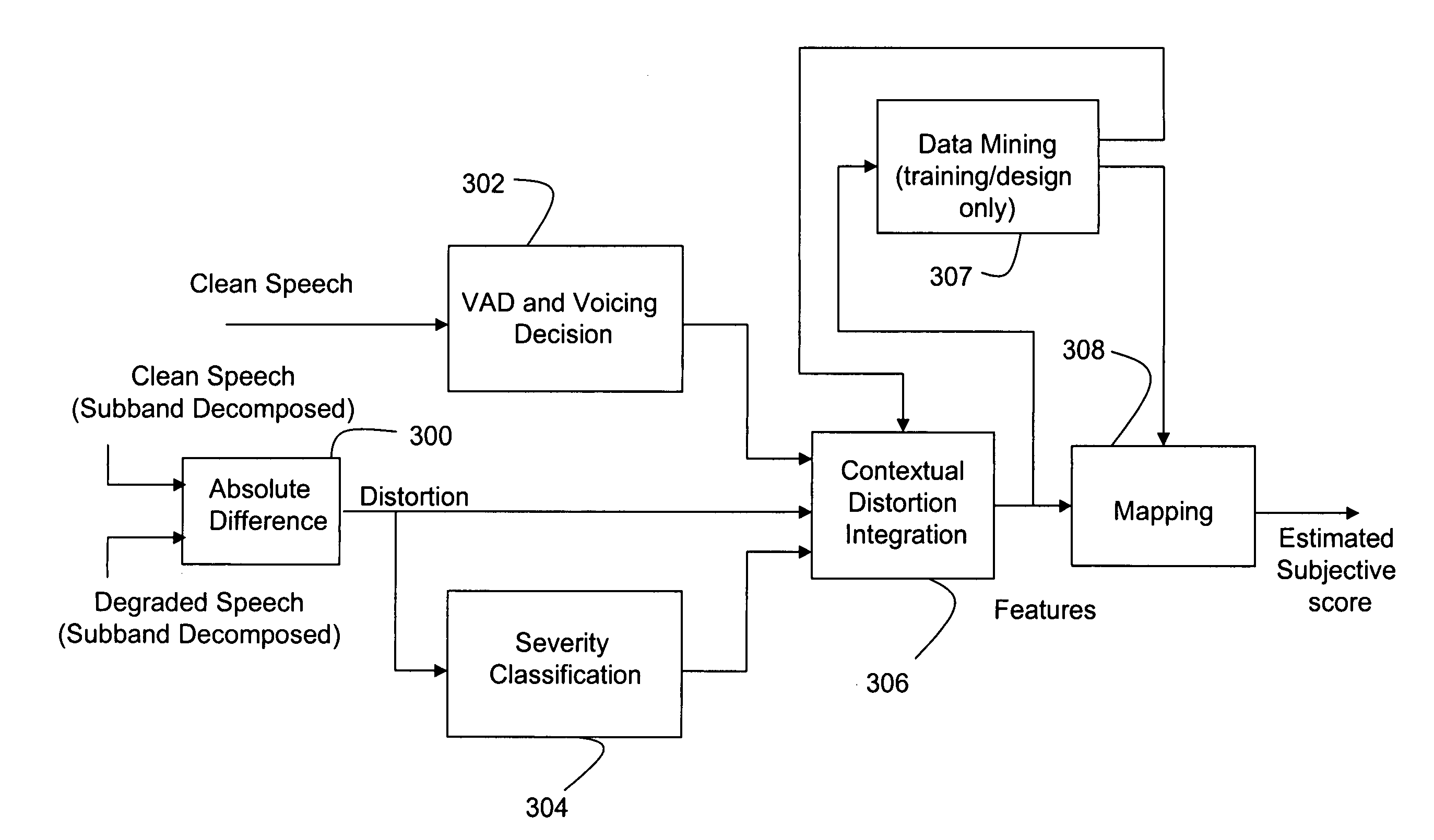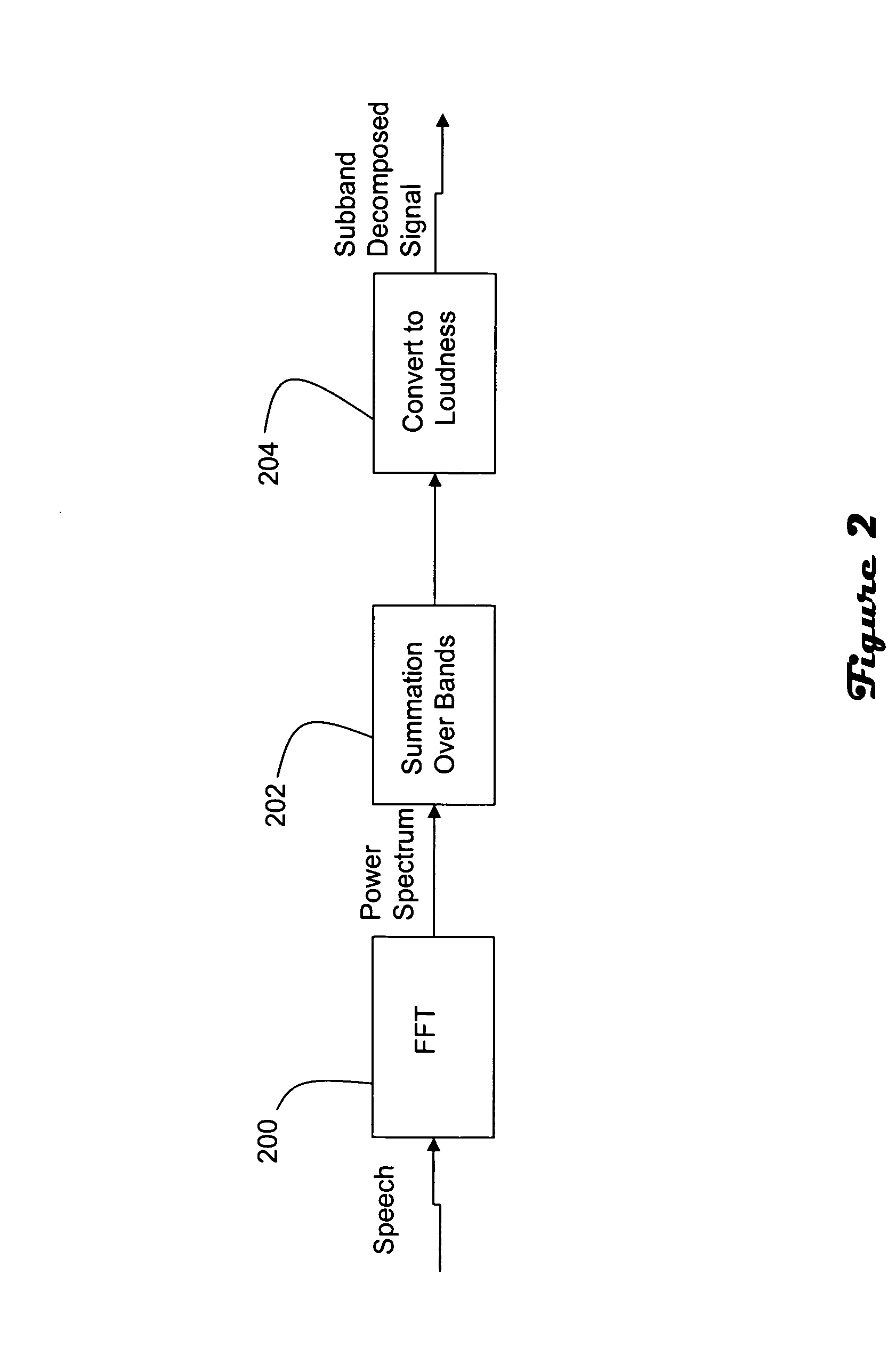Speech quality measurement based on classification estimation
a classification estimation and speech quality technology, applied in the field of double-ended measurement of speech quality, can solve the problems of difficult to anticipate how people will perceive speech quality, time-consuming and costly subjective listening tests, and unsatisfactory waveform matching, etc., to facilitate the design of more easily scalable quality estimators, simplify the auditory processing model, and simplify the effect of implementation
- Summary
- Abstract
- Description
- Claims
- Application Information
AI Technical Summary
Benefits of technology
Problems solved by technology
Method used
Image
Examples
Embodiment Construction
[0013] Human speech quality judgment process can be divided into two parts. The first part, auditory processing, is the conversion of the received speech signal into auditory nerve excitations for the brain. Techniques for objectively measuring auditory processing are well documented as auditory periphery system models. The second part is cognitive processing in the brain. In cognitive processing, compact features related to anomalies in the speech signal are extracted and integrated to produce a final speech quality. In accordance with the illustrated embodiments of the invention, this second part is objectively measured based on statistical data mining of data from human subjects, i.e., cognitive mapping.
[0014] Referring to FIGS. 1 and 2, human auditory processing is approximated, as shown in steps (100a, 100b) by the illustrated steps (200-204). Initially, the speech signal is divided into overlapping frames. The spectral power density of each frame is then obtained via FFT (200...
PUM
 Login to View More
Login to View More Abstract
Description
Claims
Application Information
 Login to View More
Login to View More - R&D
- Intellectual Property
- Life Sciences
- Materials
- Tech Scout
- Unparalleled Data Quality
- Higher Quality Content
- 60% Fewer Hallucinations
Browse by: Latest US Patents, China's latest patents, Technical Efficacy Thesaurus, Application Domain, Technology Topic, Popular Technical Reports.
© 2025 PatSnap. All rights reserved.Legal|Privacy policy|Modern Slavery Act Transparency Statement|Sitemap|About US| Contact US: help@patsnap.com



